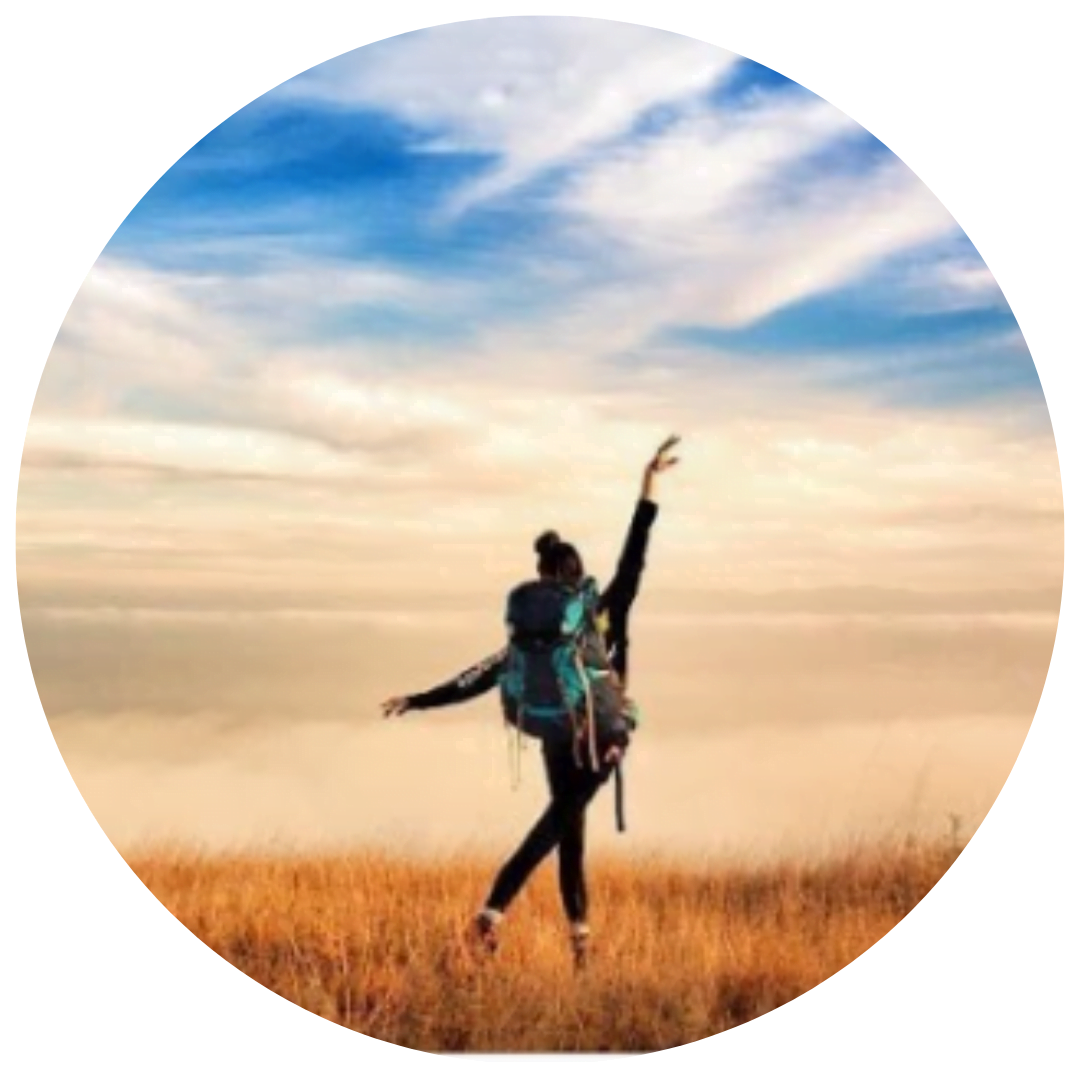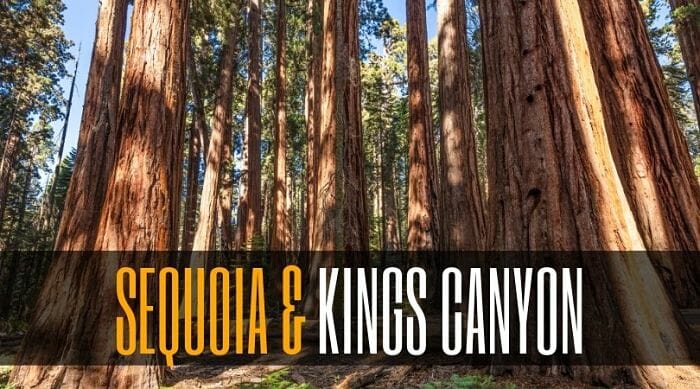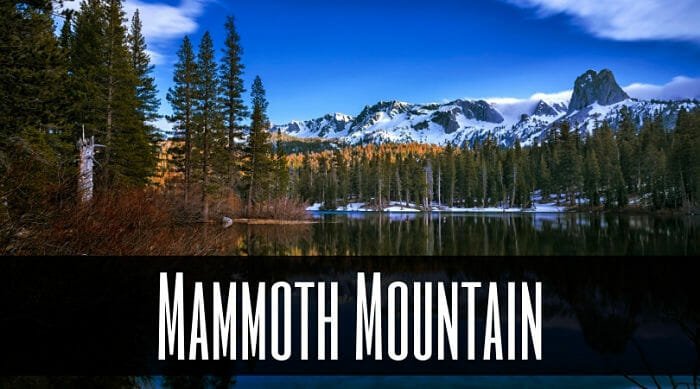In 1984 Yosemite National Park was designated a World Heritage Site for its granite cliffs, waterfalls, clear streams, Giant Sequoia groves, lakes, mountains, meadows, glaciers, and biological diversity. The United Nations Educational, Scientific and Cultural Organization (UNESCO) honors certain landmarks for having unique cultural, impactful historical, scientific or other points of significance.
So when you visit Yosemite’s 748,436+ acres of wilderness with great natural beauty, you understand why UNESCO decided to protect it. The sheer size of this National Park can be overwhelming as it stretches into four counties. Yosemite welcomes millions of visitors each year from all over the world and was a favorite wilderness area of environmental activist John Muir and outdoorsman President Theodore Roosevelt.
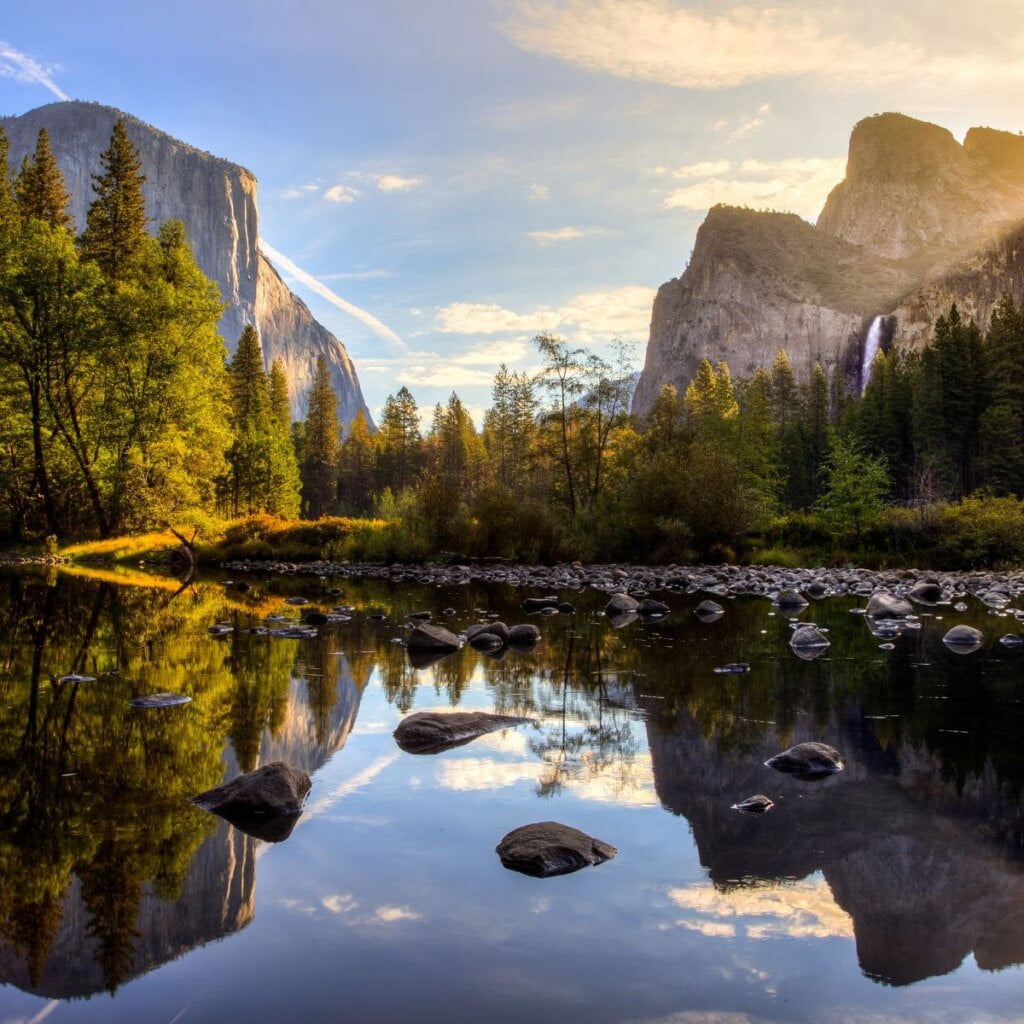
There are hundreds of hikes, world class rock climbing, and numerous camping areas to explore. Yosemite is an area of wanderlust. Where do you even start? Well, hopefully this guide will help you find the most perfect adventure for your entire family.
See More Of The Best National Parks In California
Where to Stay In Yosemite
Perhaps the first travel logistics to figure out when visiting Yosemite National Park is where to stay? Within park boundaries are numerous campgrounds, lodges, camps and even a ski hut! Here is the breakdown to help you decide which accommodation is best for you and your family.
Yosemite Campgrounds
- Yosemite Valley: Within this area there are four campgrounds. Upper Pines is open year round while Lower Pines, North Pines and Camp 4 are seasonal. Camp 4 is the most rugged where RVs are not allowed.
- South of Yosemite Valley: This area has two campgrounds. Wawona and Bridalveil Creek. Both campgrounds are open in the summer and fall seasons and are RV friendly.
- North of Yosemite Valley: With 7 campgrounds this area has the most options. Hodgdon Meadows, Crane Flat, White Wolf, and Tuolumne Meadows allow RVs. Tamarack Flat, Yosemite Creek and Porcupine Flat do not.
All campgrounds require prior reservations and they do fill up quickly. Make sure you have flexibility with dates and locations to ensure you score a spot!
Find Glamping Destinations Near Yosemite
Yosemite Area Lodges
- The Ahwahnee: If you want to stay in a gorgeous hotel in a gorgeous wilderness paradise this luxury hotel is definitely for you. Queens and Presidents have stayed in this National Register of Historic Places and is a National Historic Landmark lodge. Amenities include a fine dining restaurant, heated pool, daily afternoon tea and lush pillow-top mattresses.
- Yosemite Valley Lodge: This more traditional lodge is perfect for families and large groups. It is located right near Yosemite Falls which makes it a very popular hotel where all 245 rooms fill up fast. Amenities include onsite bike rentals, an outdoor swimming pool and a Starbucks!
- Wawona Hotel: If you want to stay among the Giant Sequoias, this is the hotel for you. This historic lodge with gorgeous Victorian design is in the southern part of Yosemite National Park near the Mariposa Grove of Giant Sequoias. Established in 1856, this really is like taking a step back in history.
- Curry Village: These cabins are actually canvas sided dwellings. More rustic than a traditional hotel yet still very private. Curry Village is located in the heart of Yosemite Valley. Not into a canvas home? There are traditional hotel rooms and wood cabins available as well.
- Housekeeping Camp: Despite its name there is no housekeeping at this camp. A more laid back, open-air experience is what you can expect without needing to set up a tent. These dwellings are alongside the Merced River in the middle of the Valley. The camp features three-sided concrete structures with canvas roofs and privacy curtains.
- White Wolf Lodge: This lodge is perfect for those wanting more seclusion from the busy Yosemite Valley. Located 30 miles away are 24 canvas-tent cabins and four traditional wood cabins with private baths. You will wake up to wildflowers in a beautiful meadow surrounded by lush pine trees here.
- Tuolumne Meadows Lodge: This lodge is located quite high in elevation at 8,700 feet above sea level. These 69 canvas tent cabins are constructed with metal frames and cement platforms. They are ideal before a backpacking trip on the east side of the National Park. Another perk is guests can sign up for free ranger-led campfire programs and guided hikes in Tuolumne Meadows.
- High Sierra Camps: These remote camps are only accessible by foot. You can enjoy the experience of backpacking without having to carry your home on your back! If you are new to the wilderness and backcountry hiking, guided mule trips and hiking trips are available. Here you’ll find several tent cabins located 6 to 10 miles apart along a loop trail, complete with cooking supplies and other camp essentials, so you can keep your load light while you enjoy the natural beauty of the High Sierras.
- Glacier Point Ski Hut: This accommodation is perfect for winter ski lovers. The bunks offer views of Half Dome and Yosemite Valley. The only downside is the ski hut is only accessible by an 11-mile cross country ski trip. The Ski Hut features large bunk areas that accommodate 20 sleepers per room, wood burning stove, restrooms, and a dining area.
Tioga Road
Tioga Road is also known as Highway 120 and leads through Yosemite. The east side of Yosemite may be less visited than the infamous Yosemite Valley but do not be detoured. Tioga Road has an abundance of hikes and overnight trips in its picturesque landscape. This portion of Yosemite starts at Crane Flat at the entrance near Mono Lake all the way to the lovely Tenaya Lake. When you explore Tioga Road you will have your choice of lush forest adventures that are relatively flat and family friendly hikes to treks along Yosemite’s North Rim that will take your breath away. And finally, you can backpack deep into Yosemite’s northeast canyons.
Be aware that Tioga Road is a seasonal road. It closes for winter after the first heavy snow in November and usually opens in late May or early June.
Must Do Hikes:
- Tamarack Flat: From this trailhead you can reach the North Rim of Yosemite Valley. It is about 8 miles one way to El Capitan, 17 miles to the grand North Dome. No matter how far or short you venture it is quite lovely as it treks through a mixed conifer forest.
- Ten Lakes: This trailhead is a great way to access the Ten Lakes Basin through Half Moon Meadow. It is about 6 miles one way to the Ten Lakes and 4 miles to Half Moon Meadow. Be prepared for views of the Grand Canyon of the Tuolumne River on this trail.
- May Lake: This trail is nestled right under beautiful Mount Hoffman. A nice short hike of about 1.5 miles will deliver you to May Lake. A 9-mile one way hike will bring you to Glen Aulin.
Tuolumne Meadows
Tuolumne Meadows sits higher in the National Park than other wilderness areas. At 8,600 feet in elevation it is the most pleasant place to visit in the hotter summer months where temperatures stay a good 15 to 20 degrees cooler than Yosemite Valley.
This area starts on Tioga Road at Tenaya Lake and spans to the Tioga Pass. Trail options in this area are really quite vast. You can choose from less than 5 mile treks to Cathedral Lakes, to thousands of miles on the Pacific Crest Trail thru-hike that goes through Tuolumne Meadows.
Again be aware that Tioga Road is a seasonal road. It closes for winter after the first heavy snow in November and usually opens in late May or early June.
Must Do Hikes:
- Sunrise Lakes: This trail starts at Tenaya Lakes and switchbacks up to the gorgeous Clouds Rest. You can reach Sunrise Lakes at about 3 miles one way or at about 7 miles to reach the beauty of Clouds Rest.
- Mono and Parker Pass: From this trailhead you will climb through alpine meadows towards Mono and Parker Passes and Spillway Lake. Mono Pass is about 4 miles one way and Parker Pass is reached at about 5 miles in.
- Mt. Dana: This cross country hike brings you to the very top of a 13,000-foot peak. About 7 miles in total, it is a popular destination not only for the challenging climb to the summit, but for the epic views.
Yosemite Valley
When you think of Yosemite National Park, Yosemite Valley is most likely the image that comes to mind. Impossibly high and ominous granite cliffs. Truly roaring waterfalls that seem to catch on fire with the winter sunrise to breathtaking destinations on the north and south rims of the valley. From Yosemite Valley, you can hike to such well known destinations as El Capitan, Half Dome, Glacier Point, Yosemite Falls, and Vernal and Nevada Falls. In the Yosemite Valley is also a Visitors Center, heavily used campgrounds, and even a quaint little chapel to visit.
Must Do Hikes:
- Yosemite Falls: This trailhead can be pretty tough as it is a steep climb out of the canyon. But as you make your way up the switchbacks you will be rewarded with sweeping views of the valley. To get to the top of Yosemite Falls is about 4 miles one way, 6 miles will bring you to Eagle Peak, and if you are really up for a great hike, 8 miles will deliver you to the summit of El Capitan.
- Pohono Trail: Also known as Wawona Tunnel, this trail gives access to the southern rim of Yosemite. A short hike of less than 3 miles roundtrip brings you to Inspiration Point. And if you hike about 11 miles roundtrip you can reach the lovely Dewey Point.
- Glacier Point: This trailhead is full of sweeping views along the Panorama Trail. Hence the name. A longer hike of 5 miles one way brings you to the picturesque Little Yosemite Valley. Or you can opt for a slightly shorter hike of about 4 miles one way to the cascading Illilouette Falls.
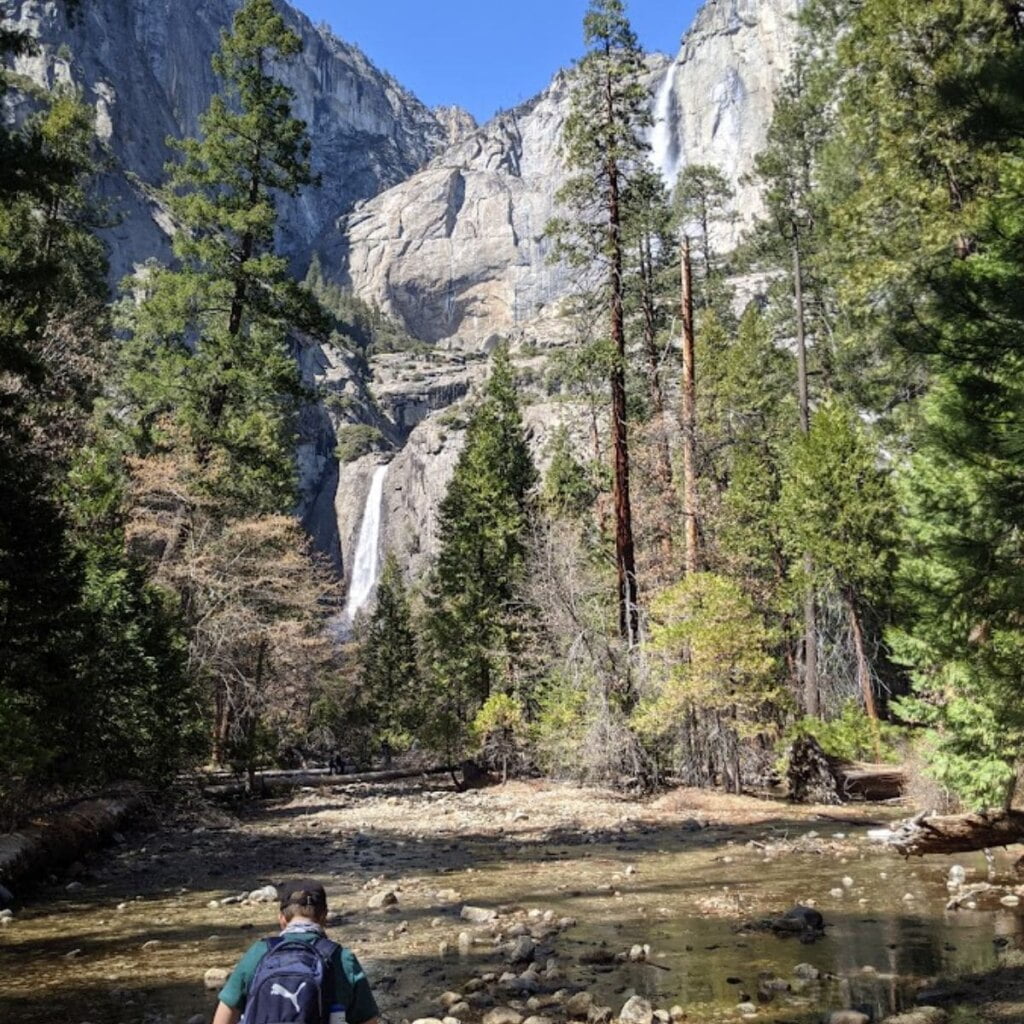
Hetch Hetchy
Hetch Hetchy Reservoir may be a portion of Yosemite National Park that you have not heard of. Located in the northwest region of the park, Hetch Hetchy serves as the portal to many spectacular and remote areas of Yosemite. A major bonus is this area is more isolated with relatively fewer visitors than Yosemite Valley. Because it is located at 3,900 feet, this is an ideal place for waterfalls and wildflower displays throughout the spring months. But unlike Tuolumne Meadows this lower elevation makes it quite hot in summer months.
Please be aware that the Hetch Hetchy Road has seasonal hours corresponding roughly with daylight hours. Make sure to check in at any wilderness center for information.
Must Do Hikes:
- Rancheria Falls: This trailhead is a wonderful one for backpackers wanting to reach the canyons of the northeast region of the park or for day hikers brave enough to follow the contour of the cliffs above Hetch Hetchy Reservoir. 7 miles one way brings you to Rancheria Falls. And a great backpacking route of over 30 miles roundtrip will bring you to Lake Vernon and back.
- Smith Peak: This trailhead is a hidden gem. It winds up through brush and meadows to the top of the statuesque Smith Peak. At about 15 miles in total, it is a steep ascent.
- Poopenaut Valley: A great trail for the entire family. At about 3 miles round trip this trail provides quick access to the bubbling Tuolumne River as it descends 1,200 feet below O’Shaughnessy Dam.
Kid Friendly Yosemite
Yosemite National Park is a place for the young and the young at heart. But with the popularity of video games, smart phones, and television you might be worried your little trekkers may get bored. Take a breath, there are actually many exciting, educational, and unique things to do and see. From hiking to junior ranger programs, horseback riding and more – you’ll definitely have a memorable and enjoyable Yosemite family vacation!
Hikes
Yosemite National Park is a wonderful playground for all ages. Although the sites of Half Dome and El Capitan may seem like intimidating mountains to climb, there are plenty of family treks for all ages.
- Bridalveil Falls Trail: When you first enter Yosemite, Bridalveil is often the first waterfall you will encounter. It is nestled right off the road in a lovely, shaded grove. A short half-mile, paved path takes you to the base viewing area of the slightly swaying waterfall. Although paved the incline grade of 80 feet gain over the half a mile is not wheelchair friendly. (This hike is dog friendly!)
- Mirror Lake Trail: A two-mile round trip hike takes you to the lovely lake nestled right at the base of Half Dome. The trailhead is at shuttle stop #17 and the mile trail is a paved service road. If you are itching for a bit more you can hike around Mirror Lake bring the total hike miles to five. This is a delightful year round lake with calm waters and grassy meadows in the summer. (This hike is dog friendly!)
- Lower Yosemite Falls: Shuttle stop #6 takes you to one of the most popular waterfalls in the country. Lower Yosemite Falls is the final 320-foot (98-meter) drop of the iconic and tallest waterfall in North America. Although the hike to Yosemite Falls is difficult, this one mile, 50 feet in elevation gain is very easy with rewarding views. The paved loop trail also provides numerous exhibits to learn more about the history and nature of the area. (The paved areas on this hike are dog-friendly!)
- Cook’s Meadow Loop: This one-mile, flat trail weaves you right through the heart of Yosemite National Park. The large and open meadow is a perfect way to take in views of Yosemite Falls, Half Dome, Sentinel Rock, and Royal Arches. There are even boardwalks to add magic to the experience.
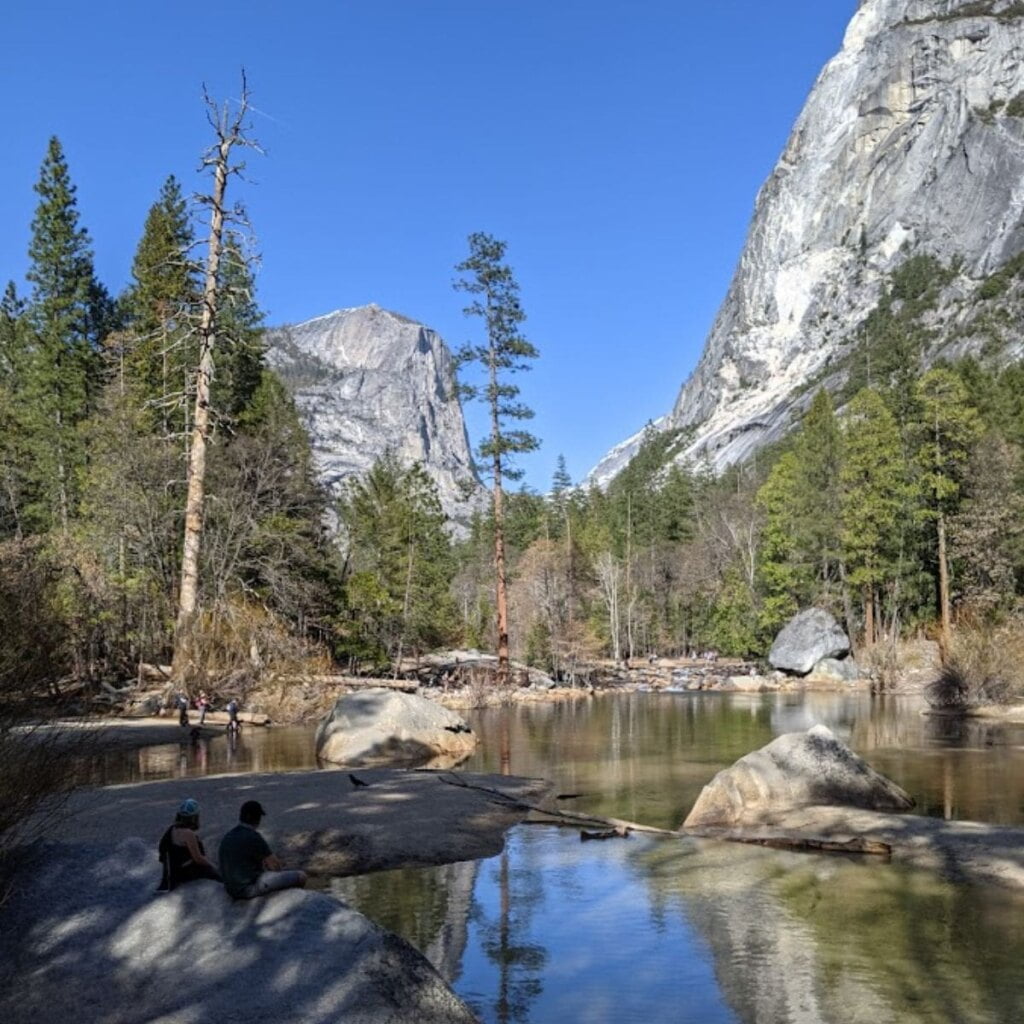
Yosemite Junior Ranger Program
One of my favorite things about visiting National Parks with children are the Junior Ranger programs. Your little ones can become a sworn-in Junior Ranger or Little Cub complete with their very own badge. What do you have to do? Pop into any store or visitor center within Yosemite National Park and grab a Yosemite Junior Ranger handbook. Although at many National Parks these handbooks are free, the Yosemite Junior Ranger handbook is sold for $3.50 plus tax.
These handbooks contain fun hands-on lessons, animal facts, and history of Yosemite. Once your young ones finish the lessons you simply meet with a Ranger to be sworn in. It is both an educational and interactive way to learn just a bit more about this beloved National Park.
Not able to visit the visitor center in person? The National Park Service also has a virtual Junior Ranger program available online! Just visit, https://www.nps.gov/yose/planyourvisit/virtual-yosemite.htm, for videos, materials, and more.
Horseback Trail Rides
Want to explore Yosemite National Park the way the first explorers did? The one true way to do that is on horseback! Although not available for the youngest family members, children age 7 and older can partake in this once in a lifetime experience. Trot around 2,000 year-old Redwood giants and cross bubbling streams as you see how the pioneers first saw this magical place. Here are two guide companies to check out for booking your own trail ride.
- Yosemite Trails: This family owned business is a highly rated one. With a ‘ride with the cowboys’ slogan you know it will definitely be fun! One hour rides start at $65 per person.
- Wawona Stable: This stable offers not only horses but their slightly more stubborn and adorable long ear cousin mules to ride. The 2-hour trail ride follows the path of an early pioneers wagon road. Rides start at $70 per person or you can opt for the all day ride for $114 per person.

Water activities
Visiting Yosemite National Park in the summer means you will be enjoying those hot summer temperatures. A wonderful way to cool off is to enjoy the numerous rivers, streams, and lakes throughout the park.
- Swimming: Curry Village and Yosemite Valley Lodge are both located within Yosemite National Park’s boundaries and both have outdoor swimming pools. However unless you are staying there you will not be allowed to swim. But swimming is generally permitted in all bodies of water in the park. The Merced River is the most ideal spot with its multiple sandy beach entrance and exit locations. Keep in mind though swimming in rivers can be dangerous and there are no lifeguards. Be aware of the swift currents, cold water, and floating trees.
- Boating and rafting: The very first place to start rafting is on the Merced River. The river is open to boating and rafting each day when the gage height at Pohono Bridge is below 7 feet at 8 am. Starting at Stoneman Bridge near Curry Village you will enjoy a three mile gentle float to take out at Sentinel Beach Picnic Area. Anther spot to raft is at South Fork of the Merced River below Swinging Bridge. Four people rafts are available for rent from four different locations: Yosemite Valley Lodge Tour and Activity Desk, Curry Village Tour and Activities Kiosk, Yosemite Village Tour and Activities Kiosk, The Ahwahnee Concierge Desk and are $28.50 per person.
- Kayaking: Tenaya Lake is not only beautiful but a great place to kayak. The water is calm and crisp with easy access so you are not dragging your kayak a long distance.
- Fishing: Many people come far and wide to fish in this beautiful destination. There are more than 770 miles of permanent streams nestled among the vast mountains. All of these streams and lakes are populated with rainbow trout and brown trout to catch. Each area has specific regulations so make sure to study the guidelines and squire the proper permits.
Furry Kid Friendly Yosemite
A pretty standard rule of thumb is National Parks and pets do not go together. This may come as a surprise. I mean who is a better outdoor companion than a high energy, no complaints and always wanting to do more puppy? But sadly National Parks and other select State Parks hold a firm policy of no furry friends allowed in their boundaries. Why? Well, no matter how sweet or how well behaved your dog may be they still are predatory animals in the animal kingdom. This causes fear and threats to any wildlife who call the wilderness home. Not only that but pups are known to carry various diseases that leave native wildlife very vulnerable to illness. I agree it is a bummer but it really is safer for all the animals including your own furry friend. But – dare I say it, there are ways to get your dog in on that family vacation without breaking any of the rules at Yosemite National Park.
First the ground rules.
- Pets are allowed at any developed areas within Yosemite National Park. What are developed areas? Think of paved roadways, bicycle paths and sidewalks. Unless otherwise signed of course.
- Pups are also allowed in campgrounds throughout the park that you can drive up to. Those backcountry walk/hike-in campgrounds are no pets allowed sites.
- Similar to laws throughout the country make sure you keep your pet on a 6 foot leash at all times and within your control.
- There is no poop fairy. I know. I know. I do badly want to believe as well but you are in charge of cleaning up any special deposits your pet makes.
- And lastly, bears are main residents within Yosemite National Park. Just like human food, pet food must be stored in appropriate bear canisters. A friendly bear ultimately ends up a dead bear so let’s do our part to keep them alive!
Now that the ground rules are out of the way here are the hikes you can take your pet on:
- Bridalveil Falls Trail: This completely paved half a mile hike takes you to one of Yosemite National Park’s most popular waterfalls. A great hike for both kids and furry friends.
- Lower Yosemite Falls: This hike is anther popular waterfall. Lower Yosemite Falls is the final 320-foot drop of the iconic and tallest waterfall in North America. The paved loop trail also provides numerous exhibits to learn more about the history and nature of the area.
- Cook’s Meadow Loop: This one mile, flat trail weaves you right through the heart of Yosemite National Park. The large and open meadow is a perfect way to take in views of Yosemite Falls, Half Dome, Sentinel Rock, and Royal Arches. There are even boardwalks to add magic to the experience.
- Wawona: Dogs can hike the Wawona Meadow Loop, the Chowchilla Mountain Road, and Four Mile and Eleven Mile fire roads. Be careful however that you do not confuse the Four Mile fire road with the Four Mile Trail in Yosemite Valley.
- Hodgdon Meadow: Carlon Road from the trailhead to Hodgdon Meadow is pet friendly as well as the Old Big Oak Flat Road from Hodgdon Meadow to Tuolumne Grove parking lot.
Now that you know what hikes you can do with your furry friend, here are the best places that happily welcome your pup.
- Yosemite View Lodge: This 3-star hotel is right outside Yosemite National Park. With 335 rooms, all luxurious, you and your pup will feel very pampered. Amenities include balconies overlooking the park, a pool and hot tub.
- River Rock Inn: This is a historic inn located right in downtown Mariposa. First constructed as a house in 1891 to later be established as a hotel in 1941 makes this inn the oldest one in town. With only nine rooms you will feel very private and homey.
- Tenaya Lodge at Yosemite: This modern hotel is just two miles from Yosemite’s South Gate. Rooms span from cottages, suites and standard hotel design. Amenities include both indoor and outdoor pools.
- Yosemite Gold Country Lodge: Located in Coulterville, this lodge is about a 25 minute drive to the park. A more simple hotel without many amenities, it is a great budget friendly option.
- Best Western Plus Yosemite Gateway Inn: This Best Western is designed like a classic resort lodge. All reservations come with a great breakfast spread and the bus stop to Yosemite is right outside the front doors. There is also a pool to relax in.
After reading all about the pet friendly options at Yosemite National Park you may still not be feeling bringing your furry friend within the park. And that is completely alright. In fact, Yosemite Hospitality operates a dog kennel in the gorgeous Yosemite Valley from approximately late May through early September. You will need to provide written proof of immunizations that include rabies, distemper, parvo, and Bordetella. The weight requirements are that dogs must be at least 20 pounds unless you provide a small kennel for those tiny ankle biters. More information about the kennel can be acquired by calling 209.372.8326.
Last but certainly not least, pets classified as service animals that are individually trained to perform a specific task that assists a person with a disability are legally permitted anywhere that visitors can go. Be aware however that emotional support, therapy, and companion animals, as well as service animals in training, are not service animals and must abide by all pet regulations.
Tunnel Vision
One of the best things about visiting Yosemite National Park may just be the incredible drives you can take throughout the park. Tioga Highway is a seasonal road that connects the west to the east of Yosemite National Park with such sweeping views of the surreal surroundings. The highway is full of tight turns, massive overhanging rocks, alpine lakes and snow capped mountains that just beg for frequent stops at vistas.
But arguably the best view along a road with absolutely no hiking required is the one right at Wawona Tunnel. This impressive tunnel is located on highway 41 which connects the city of Fresno, California to Yosemite Valley. First constructed in 1933, Wawona Tunnel and the Tunnel View overlook are iconic features seen in numerous advertisements, artist renderings, and history books.
One year after the completion of Wawona Tunnel in 1934, gifted photographer Ansel Adams captured a black and white picture that brought visitors near and far to see in person. Honestly the tunnel itself can be considered a work of art. The overlook was constructed to have a distinctive “rustic design style,” as the National Park Service worked hard at numerous construction projects throughout the National Parks in that era. Wawona Tunnel and Tunnel View were crowning jewels of them all and in 1986 were indoctrinated into the National Register of Historic Places because of their exemplary design.
Now just sit back, close your eyes and imagine. You are slowly weaving and turning along the narrow, two laned highway, that seems way too close to a dramatic drop off. The climb in elevation is slow as you find yourself more and more immersed in the wilderness around you. Tall granite walls with lush forests provoke ‘wows’ from even the strictest critic of family fun. Then you see it coming up on the road.
The Wawona Tunnel is the longest tunnel in California at a length of 4,233 feet. You and the kids hold your breath to see who can last the entire span. It is dark but not too dark with yellow tinted lights lining the ceiling. You click on the headlights just in case.
On the other side is the largest Tunnel View parking lot. The bottom half fills up quickly so park above to walk across the pedestrian walkway spanning the highway. The views are breathtaking to say the very least. On the left is the prominent Southwest face of El Capitan. It is here where as the sun rises the alpine glow first hits its nose. Soon lighting the entire valley up in vibrant orange, warm hues. Half Dome sits directly in the center with Bridalveil Fall on the right. Below is a lush carpet of trees, and in winter gently covered in white snow.
When you park here you also are right at the Inspiration Point trailhead. This short but steep hike brings you up to an even higher view of Yosemite Valley.
With 5,000 to 7,000 people visiting per day, the Wawona Tunnel and Tunnel View are must stops on your Yosemite National Park vacation.
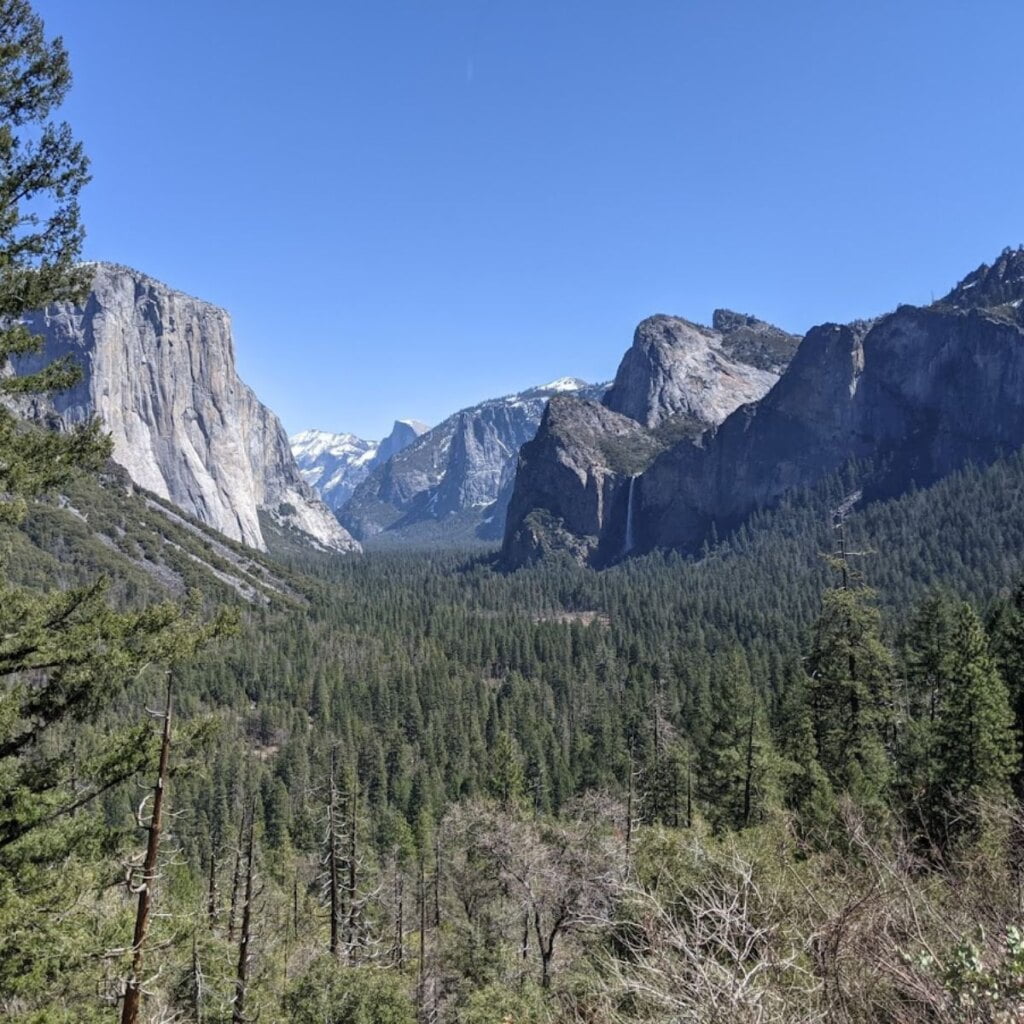
Mariposa Grove
Mariposa Grove is a step into history. Large, overwhelmingly beautiful Giant Sequoias are everywhere among this lush forest grove located in the southern portion of Yosemite National Park. But before National Parks were even created in the year of 1864 President Lincoln signed a groundbreaking legislation protecting the Mariposa Grove and Yosemite Valley for “public use, resort, and recreation.” No type of order had ever existed before where the federal government took charge of wilderness areas to protect them for public use and future generations. President Abraham Lincoln saw the importance of stopping mass logging of these ancient giants in Mariposa Grove as well as Yosemite Valley. But perhaps the most amazing fact about this landmark legislation was how it was enacted at a time when the nation was embroiled in the Civil War.
Hiking
Visiting Mariposa Grove is one of our favorite things to do when visiting Yosemite. Don’t skip it! Hiking among the giants is one to remember. Here are some of the must do hikes:
- Big Trees Loop: This super short family friendly hike is only .3 mile. The paved, flat loop begins at Mariposa Grove Arrival Area and winds through the Sequoia forest. It is also a great educational trek with the Fallen Monarch and interpretive panels on the life and ecology of giant sequoias.
- Grizzly Giant Loop: This trail is about 2 miles in length with a moderate 300 feet of elevation gain. The trail begins on the Big Trees Loop and you get to see famous tree stars such as the Bachelor and Three Graces, the 3,000-year-old Grizzly Giant, and the California Tunnel Tree.
- Guardians Loop Trail: This trail is for those wanting more of a workout. The round trip length is just about 7 miles in total. The trail starts into the tranquil upper portion of the grove, where you can see the fallen Wawona Tunnel Tree, the Telescope Tree, and the Mariposa Grove Cabin.
- Mariposa Grove Trail: Probably one of the most historic trails, you start out on a wide and relatively smooth trail that follows a route that people have used to access the grove for generations. As you hike up to historic Wawona Point, you are rewarded with an overlook with panoramic views. The 7-mile loop is strenuous at portions with a total elevation gain of 1,200 feet.
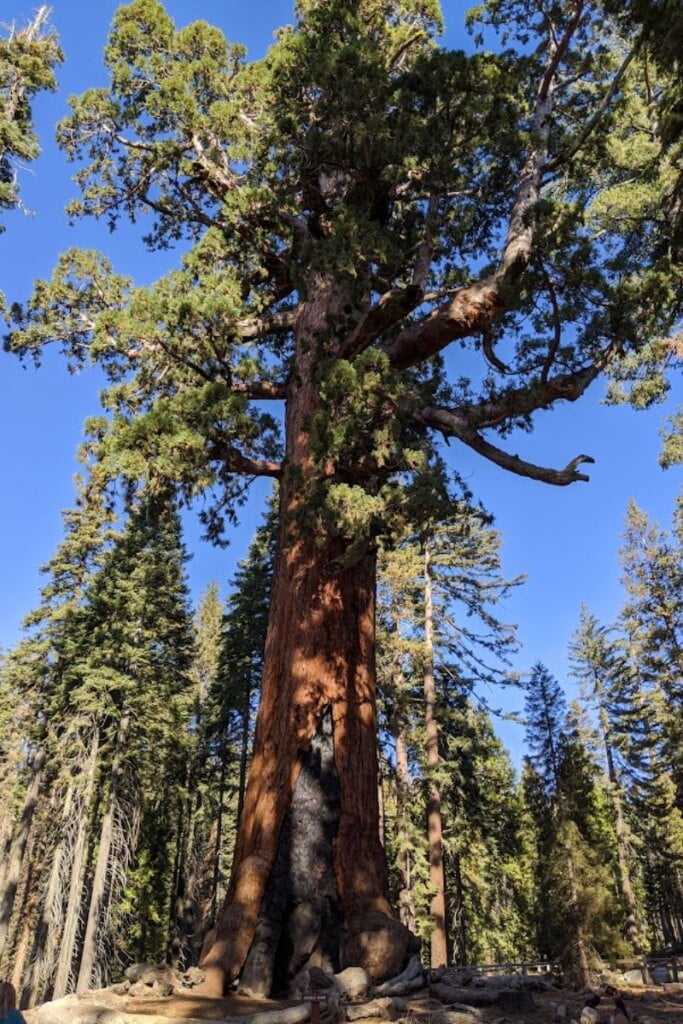
Mariposa Grove Winter Wonderland
Mariposa Grove Road closes every year to vehicular access from the end of November, typically after the first big snow storm until at least March 15th. Heavier snow years means the road is closed longer for safety. But even though you can not reach Mariposa Grove by car you can still trek all the trails via cross-country skiing and snowshoeing along the closed Mariposa Grove Road. Overnight camping is only allowed in the Mariposa Grove from December 1 through April 15 when the Mariposa Grove Road is closed to cars. Make sure you pick up a wilderness permit to camp, and camp only above the Clothespin Tree.
Before You Go
Here are some helpful things to know before you visit Mariposa Grove.
- Mariposa Grove is not a pet friendly destination unfortunately. Your furry friends are allowed in the parking areas and on the paved road up to near the Grizzly Giant but once the dirt trail starts to the Grizzly Giant they must stop hiking. Always keep your pets on a leash no matter where you are.
- Horses are allowed with very limited access. You may ride only on the Perimeter Trail.
- Need to use the loo? Restrooms are located at the Mariposa Grove Welcome Plaza and Arrival Area, near the Mariposa Grove Cabin, and near the Grizzly Giant year-round.
- It is super important to hydrate with water. Drinking water is available only at the welcome plaza all year-round. In the summer peak months water can also be found at the arrival area.
- In 2021 bicycling became limited to only the arrival area in Mariposa Grove.
- Make sure you pack your own snacks! There is no food for purchase throughout the area. However The Depot, located at the welcome plaza, has a selection of books, maps, general information, and gifts to remember your time here at Yosemite National Park.
Yosemite Historic Spots
One step into Yosemite National Park is a step back into a long history of conservation, public lands and the great expeditions of the west. Yosemite was first protected in 1864 with Abraham Lincoln’s Yosemite Grant. And in 1890 John Muir led a successful movement to have Congress establish a larger national park protecting more of the valley and lands. This monumental bill was the foundation of what is the National Park System we know today with its 423 national park sites; 63 of which are National Parks. When visiting Yosemite there are many historic sites rich with history and culture that add to the beauty of the wilderness. Here is everything you need to know:
Yosemite Museum
In the years surrounding 1925 the National Park Service worked on constructing a more rustic style with its buildings. Aptly named the ‘National Park Service Rustic Style’ – the concept based on the belief that ‘buildings should blend in with their natural surroundings and that natural settings could influence architecture.’ The Yosemite Museum was crafted to portray that vision with its large stone base and dark brown wood features.
The Museum gives visitors an opportunity to learn about the area through multiple exhibits. In fact the whole museum plan for each room was designed in chronological order, beginning with geological exhibits describing how rocks and natural occurrences formed the Yosemite Valley. After that visitors are led through the building towards the stage coaches that brought early visitors to the park. Other rooms include natural history exhibits, the life zone room, and the Indian room. To see the stage coaches and wildflower exhibits you exit the building to the covered rear porch.
The Yosemite Museum is open year round from 9 am to 5 pm, but may close at noon for 1 hour. The location of the museum is in the Yosemite Valley.
Golden Crown Mine
The west was truly discovered by prospectors in search of gold. Mono Pass where Yosemite National Park lies is no different. Golden Crown Mine was one of the first and was established in 1879 by Orlando Fuller. Mining was not very long here so mines quickly shut down after a few years but you can still see remnants of these historical buildings. There are five log cabins remaining that mark the location of the Golden Crown and Ella Bloss mines. The Golden Crown Mine is located high up on Mono Pass, right on the boundary of Yosemite National Park at 11,000 feet in elevation. This site is actually the site of the traditional trade route of the Mono Indians.
When you visit please be careful. These cabins are increasingly fragile as time, weather and people make an impact. The National Park Service has nominated the site to be included into the National Register of Historic Places in order to further protect this rich history of the area. Always, always, always leave what you find in Golden Crown Mine for others to discover and enjoy. Not to mention it is illegal to damage, deface, or remove archeological objects or features from federal lands.
To see the Golden Crown Mine requires a strenuous hike up to the site, beginning at the Mono/Parker Pass trailhead, along the Tioga Road east of Tuolumne Meadows. Although difficult it is a wonderful way to connect to the past all while hiking through some truly gorgeous wilderness.
Yosemite Chapel
This quaint chapel is located right in the heart of the Yosemite Valley. All around it are the massive granite walls and lush meadows. Built almost 135 years ago it is still the home of an active church – the Yosemite Community Church. The chapel still holds worship services on Sundays and weekly Bible studies on Thursdays.
Of all the structures for public use in Yosemite National Park, the Yosemite Chapel is the oldest. It was first built in 1879 under the sponsorship of the California State Sunday School Association. But the original location of the chapel is not actually where it sits today. The original location was near the base of the Four Mile trail. This is only about a mile from its present site on the south side of Yosemite Valley. The move in 1901 helped bring the community back to the building as it is now in a more active area for visitors.
Many people come to visit the Yosemite Chapel for an ideal wedding spot. As well as experience a Historic American building that was first recognized in 1965.
Yosemite National Park has been a special place since it was first explored so long ago. It was a place for adventures before the National Park Service was even created and remains a protected and impactful wilderness haven. Everyone will find something here to spark inspiring awe.
Happy adventures!
Find The Best State Parks In California
Related Articles
| Redwood State & National Parks | Henry Cowell Redwoods State Park |
| Muir Woods National Monument | Free National Park Days |
| Joshua Tree Camping, Hiking, & More | Cleveland National Forest |
